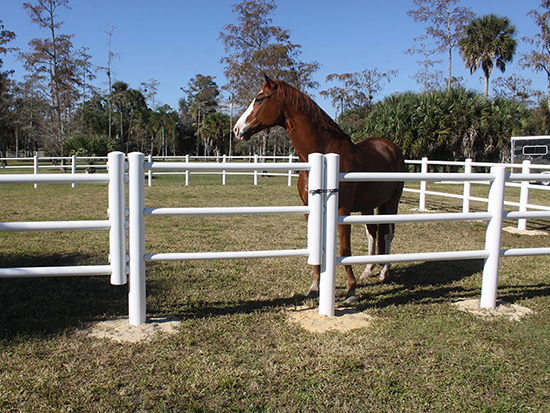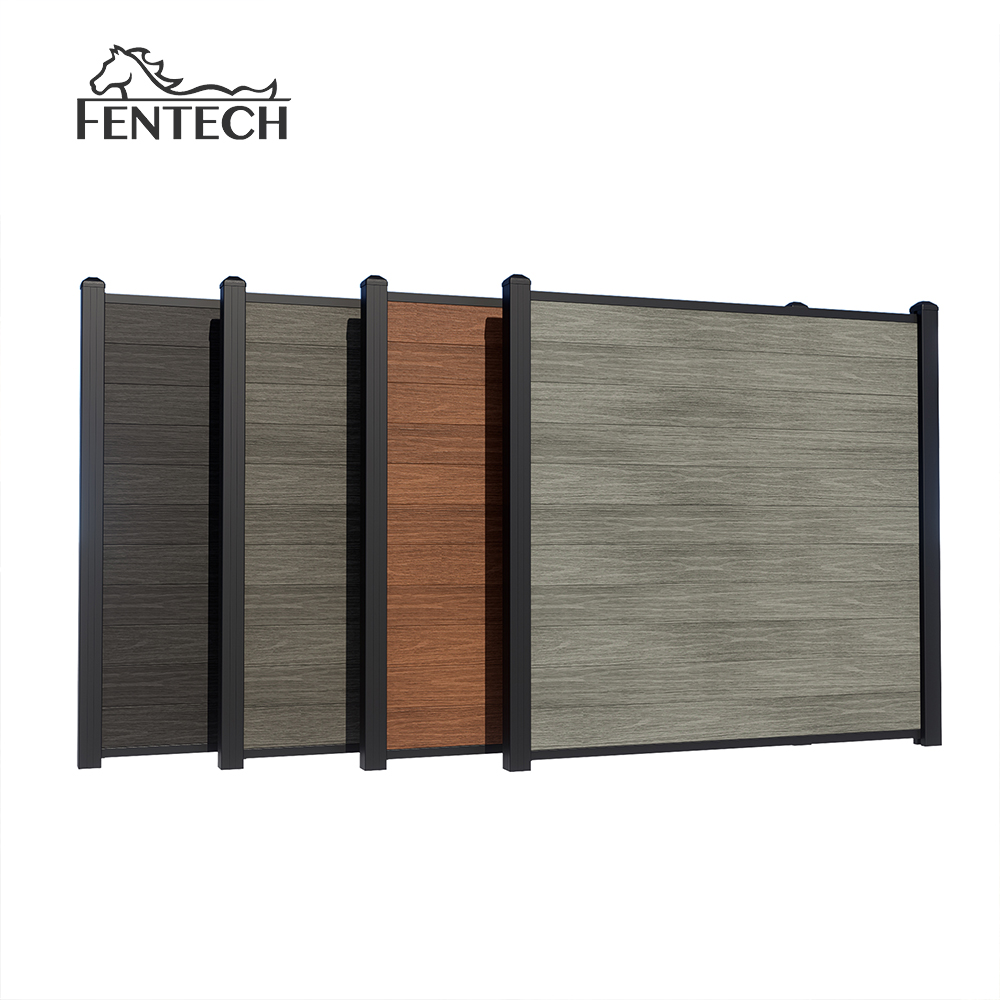We are professional China Custom Vinyl Fence Manufacturers with fences virgin PVC/Vinyl material and UV Protected.
Vinyl horse fence has become increasingly popular among equestrians seeking safe, durable, and low-maintenance solutions for their pastures and paddocks. This comprehensive guide explores all aspects of vinyl fencing to help you make informed decisions for your equine facilities.
Why Choose Vinyl Horse Fencing?
When selecting fencing for horses, safety and durability are paramount considerations. Vinyl fencing offers significant advantages over traditional materials like wood or wire, providing superior longevity with minimal maintenance requirements. Unlike wood that can rot, splinter, or require constant repainting, vinyl maintains its structural integrity and appearance for decades.
Enhanced Safety Features
Vinyl fencing eliminates sharp edges, splinters, and protruding nails that can injure horses. The flexibility of vinyl rails provides some give upon impact, reducing injury risk compared to rigid materials.
Minimal Maintenance Requirements
Unlike wood that requires regular staining or painting, vinyl fencing only needs occasional cleaning with soap and water to maintain its appearance. This saves significant time and resources over the years.
Long-Term Durability
High-quality vinyl fencing is UV-resistant, waterproof, and impervious to insect damage. Properly installed vinyl fencing can last 30+ years without significant deterioration.
Cost-Effectiveness Over Time
While the initial investment is higher than some alternatives, vinyl's longevity and minimal maintenance make it more economical over its lifespan compared to wood fencing that requires frequent replacement.
Comparing Fencing Materials
Understanding how vinyl compares to other fencing materials helps in making an informed decision. This comparison table highlights key differences:
| Feature | Vinyl | Wood | Wire Mesh | Electric Tape |
| Initial Cost | $$$ | $$ | $ | $ |
| Lifespan | 30+ years | 10-15 years | 15-20 years | 5-10 years |
| Maintenance Level | Very Low | High | Medium | High |
| Safety for Horses | Excellent | Good | Fair | Good |
| Visibility | Excellent | Good | Fair | Good |
| Installation Difficulty | Moderate | Moderate | Easy | Easy |
| Weather Resistance | Excellent | Fair to Good | Good | Poor to Fair |

Vinyl Fencing Installation Process
Site Preparation
Proper site preparation is crucial for a successful installation. Begin by marking the fence line using stakes and string. Clear vegetation and debris from the path, ensuring a clean working area. Address any drainage issues that might affect fence stability. For optimal results, install fencing during moderate weather conditions when the ground is neither frozen nor extremely wet.
Post Installation
Set posts at appropriate intervals, typically 6-8 feet apart depending on rail length. Dig holes to a depth of 24-36 inches, accounting for frost line requirements in your region. Use a concrete mixture specifically formulated for fencing applications to secure posts. Ensure perfect vertical alignment using a level before concrete sets. Allow adequate curing time before attaching rails.
Rail Attachment
Begin attaching rails from the bottom upward. Most vinyl fence systems feature interlocking rails that slide into post channels. Apply gentle pressure to ensure secure connections without forcing components. For corners and gates, use specialized hardware designed to maintain structural integrity. Ensure all connections are properly seated and secured according to manufacturer specifications.
Gate Installation
Position gate posts with extra reinforcement to handle operational stress. Hang gates using heavy-duty hinges specifically rated for vinyl fencing systems. Adjust for proper clearance and smooth operation. Install latches at appropriate heights for both human access and horse safety. Test gate operation multiple times during installation to identify and correct any binding issues early.
Vinyl Fencing Gallery
Explore different vinyl fencing configurations suitable for equestrian applications:
Maintenance and Care Guidelines
While vinyl fencing requires minimal maintenance compared to other materials, proper care extends its lifespan and maintains appearance:
Regular Cleaning: Clean fencing annually using a mild detergent solution and soft brush. For tougher stains, specialized vinyl cleaners are available. Avoid abrasive tools or harsh chemicals that might damage the surface.
Seasonal Inspection: Perform thorough inspections each spring and fall. Check for any cracks, loose components, or structural issues. Pay special attention to gate hardware and post connections.
Vegetation Management: Maintain a 6-12 inch clearance between fencing and vegetation to prevent moisture retention and potential damage from plant growth. Avoid using string trimmers near fence bases to prevent accidental damage.
Winter Considerations: In snowy regions, avoid piling snow against fencing. Remove ice carefully without using metal tools that could scratch or damage the vinyl surface.
Safety Considerations for Horses
When installing vinyl fencing for horses, several safety factors require special attention:
Height Requirements: For most horses, fencing should stand 54-60 inches tall. For jumpers or stallions, consider 60-72 inch heights. Bottom rails should be positioned 12-18 inches above ground level to prevent hoof entrapment.
Rail Spacing: Proper rail spacing prevents horses from getting legs or heads caught. Space rails approximately 12 inches apart for adult horses. For foals or miniature breeds, closer spacing or mesh backing may be necessary.
Visibility Enhancement: While white vinyl offers good visibility, adding contrasting tape to top rails improves visibility in low-light conditions. Some owners opt for rails with integrated reflective strips for enhanced nighttime visibility.
Cost Analysis and Budget Planning
Understanding the financial aspects of vinyl fencing helps with planning and decision-making:
Initial Investment: Vinyl fencing costs $20-$40 per linear foot installed, depending on quality, height, and design complexity. This represents a premium over basic wood or wire options but offers long-term savings.
Long-Term Savings: Over a 20-year period, vinyl fencing typically costs 30-50% less than wood when factoring in maintenance, repairs, and replacement expenses. The elimination of regular painting and staining represents significant savings.
Professional Installation vs. DIY: Professional installation ensures proper implementation but adds 30-50% to material costs. DIY installation requires specialized tools and careful attention to manufacturer specifications.
Environmental Considerations
Modern vinyl fencing offers several environmental benefits compared to traditional materials:
Longevity: The extended lifespan of vinyl fencing reduces resource consumption over time compared to materials requiring frequent replacement.
Recyclability: Many vinyl fencing products contain recycled materials and are themselves recyclable at end-of-life, diverting waste from landfills.
Manufacturing Impact: Leading manufacturers employ environmentally responsible production methods, including closed-loop water systems and energy-efficient processes.
Frequently Asked Questions
Does vinyl fencing become brittle in cold weather?
High-quality vinyl formulations maintain flexibility in temperatures as low as -40°F. Avoid impact with heavy equipment during extreme cold.
Can horses chew on vinyl fencing?
While vinyl is generally unappealing to horses, occasional chewing may occur. Apply non-toxic bitter-tasting deterrents to problem areas if chewing becomes an issue.
How does vinyl hold up to sun exposure?
UV-stabilized vinyl resists fading and deterioration from sunlight. Premium products come with warranties against excessive fading for 20+ years.
Can vinyl fencing be repaired?
Minor scratches can be buffed out with specialized compounds. Damaged rails can be replaced individually without rebuilding entire sections.
 English
English  中文简体
中文简体
























